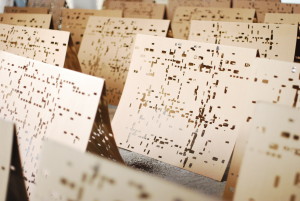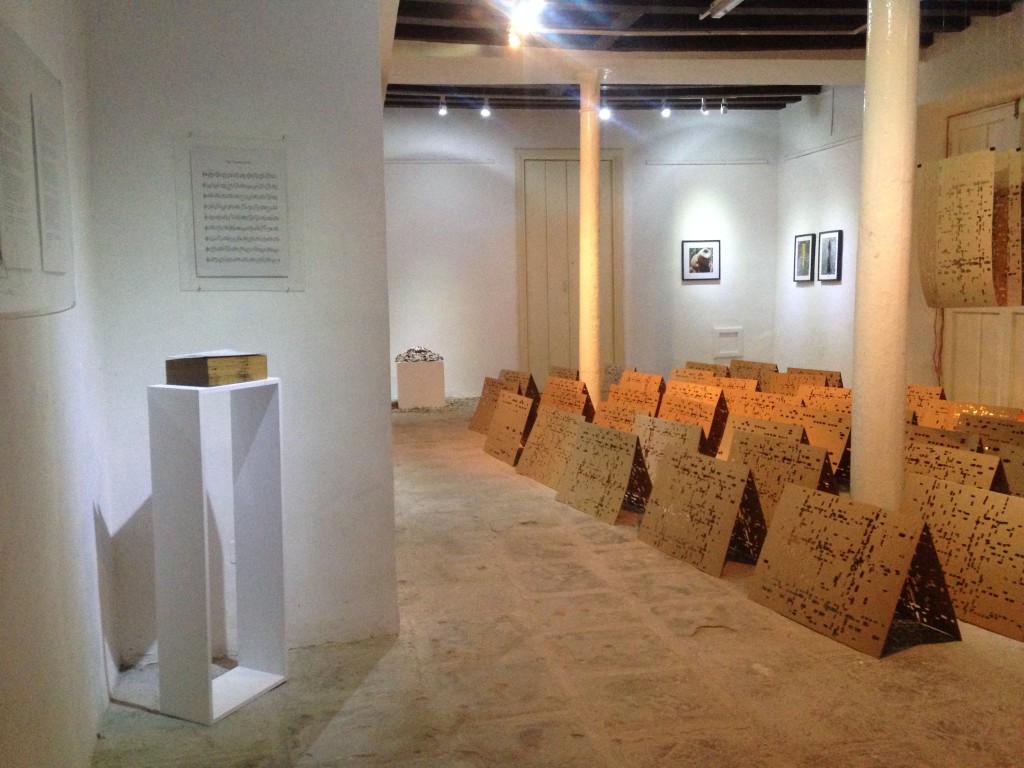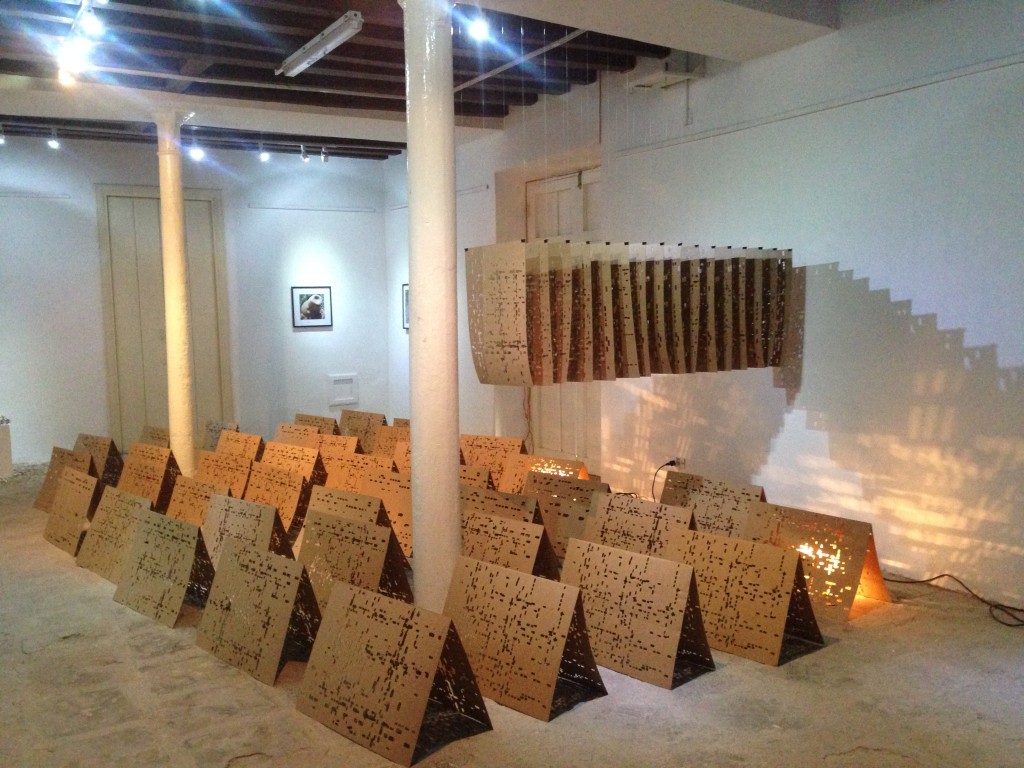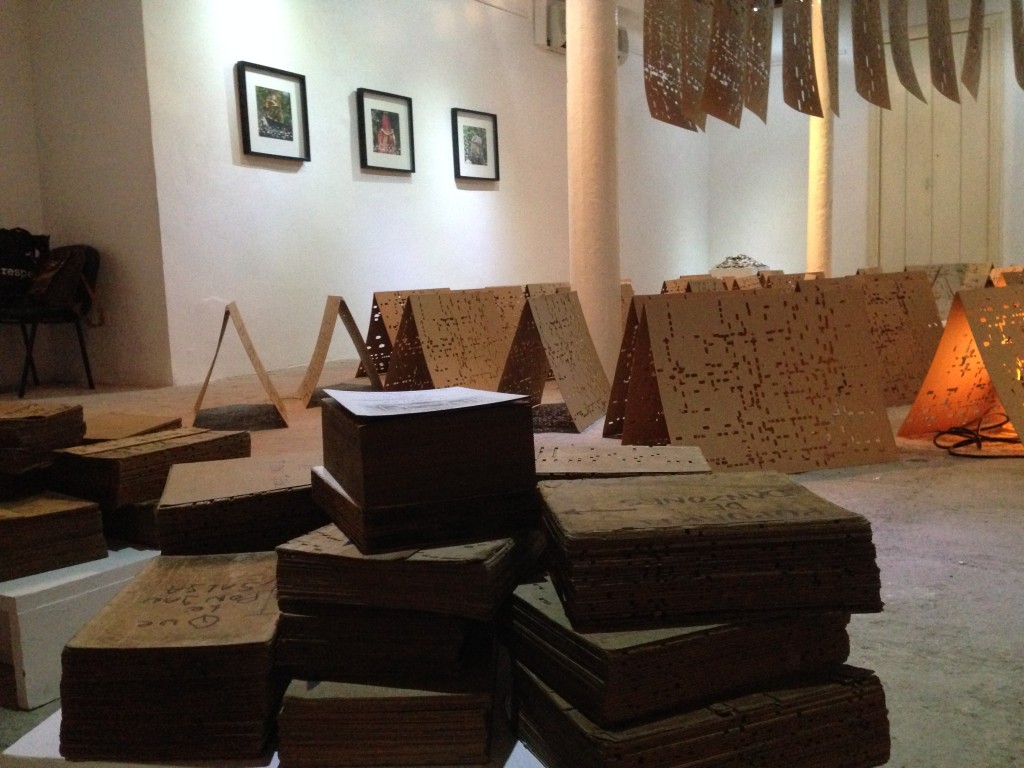
Antonio Jose Guzman is one of the artists in the Havana Biennial, Until June 22, 2015
About ‘ELOO’ by Antonio Guzman:
THE SOUND OF DNA
In all the projects of Antonio Jose Guzman (Panama City, 1971) there is a relationship with the location at which he presents the project. He calls this “Sociological mapping”. In all his projects he is looking for cultural connection, for opportunities for communication, for an open confrontation with other cultures. In all his projects immigration is a common theme. In all his projects his birth, a mixture of African, Latin American and European, and his own identity associated with this play a role.
When presenting his projects he chooses spaces for the installation that have been erected from scrap materials and where the human contribution is provided through photos and videos. These spaces offer ample room for reaction and interaction. They create a context in which the viewer can ponder the questions raised, unhindered by an ‘architecture’ that is imposing itself upon him.
The ‘El Organo Oriental. Transillumination Sequence #1’ (ELOO) project, which he has developed especially for this biennale, is a logical extension of these principles.

It highlights the significance of the organ in Cuban culture and the rich tradition of the organ in Amsterdam, the city in which Guzman lives and works. He places an original Cuban organ in a large space so that the sound is given free rein. The organ plays music that has been composed using the information elements from the artist’s DNA. The enlarged sheets of the unique organ score hang suspended in the space. This makes the DNA not only audible but also visible. The air currents in the space give the composition a physical animation similar to the ‘dancing’ notes on a stave. Related photographic works complete the whole.

At scheduled times the artist executes a performance in the space. Depending on the circumstances he invites others to participate in his installation, in order to allow their own sound to be heard.
The barrel organ came to Amsterdam from France around 1875. Cuba also imported its first barrel organs from France, probably at the same time, but in any case before 1900. Not surprising for a country where music plays such a dominant role and any addition to the range of available instruments is welcome. The story goes that by 1876 an organ had already turned up in Manzanillo in eastern Cuba. Haiti was even faster than the Cubans. The large Haitian presence on Cuba helped to develop the instrument. The Dutch history of the organ therefore runs parallel to its history in Cuba, although here the European music that was played on it was quickly replaced, partly due to the influence of the Haitian refugees, by rumbas, cha-cha-chas, merengues and mambos, etc.

In fact Guzman’s ‘ELOO’ tells the story of the affinity between mutually vastly differing cultures. Then add to this that the identity of the artist, just as the identity of Cuba, is formed in part from that of Africa, and Guzman’s development of a project such as ‘ELOO’ becomes only natural.
The 12th Havana Biennale does not have a central location. Intentionally. They are explicitly looking for connections between works of art and locations. A principle that characterizes Antonio Guzman’s entire oeuvre.
Rob Perrée/Translation Jane Hall
Amsterdam, March 2015.


